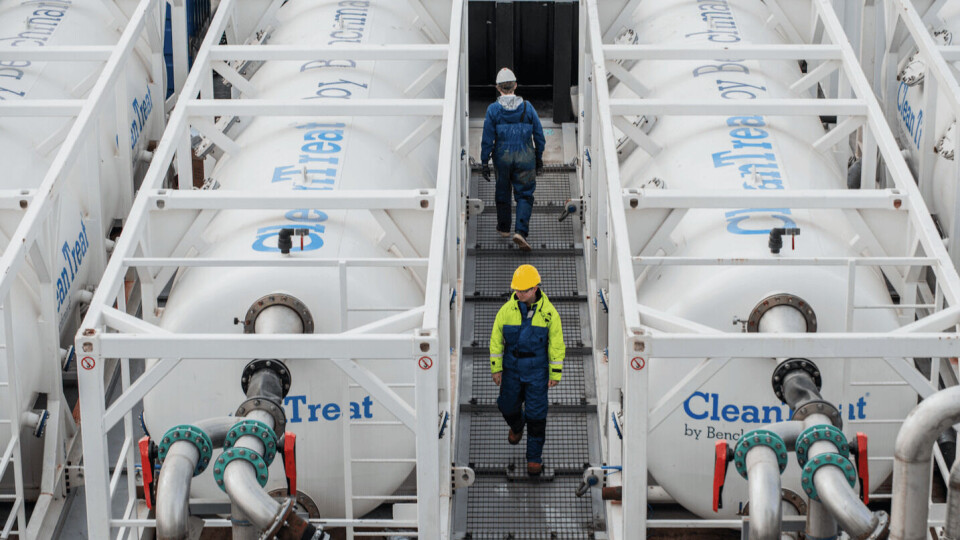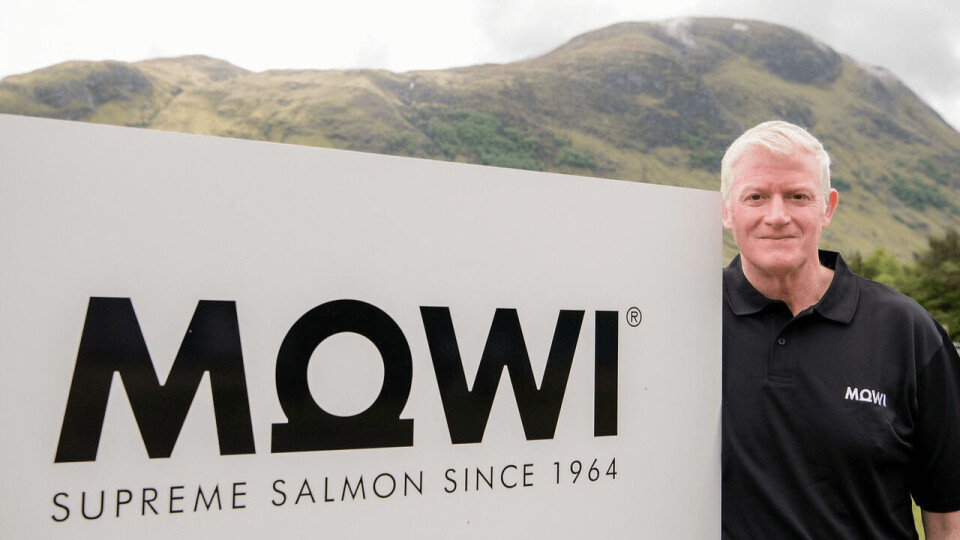
CleanTreat to be trialled by Mowi in Scotland
Aquaculture biotechnology company Benchmark’s lice treatment water purification system CleanTreat will be tested at a Mowi fish farm in Scotland over the next month, in a trial supported by the University of Stirling’s Institute of Aquaculture and the Sustainable Aquaculture Innovation Centre (SAIC).
CleanTreat was designed at Benchmark’s R&D facility at Ardtoe in Scotland as a means of removing residues of Benchmark’s novel Ectosan Vet lice medicine from wellboat treatment water, although it can also be used with other chemicals.
Ecotsan Vet, which contains the insecticide imidacloprid, is not yet licensed for use in the UK. Instead, the consortium will test the efficacy of CleanTreat in removing Salmosan Vet (azamethiphos), in a range of conditions, aiming to determine how and in what quantities it can be filtered from treatment water. A small system built for the trial will be used.
Salmosan Vet, also marketed by Benchmark, is a leading treatment for sea lice and has been approved for use in Scotland since the early 1990s.

Quicker response
In a press release, SAIC said that introducing CleanTreat could allow fish farmers to respond more quickly to sea lice challenges, be more precise and effective with treatment, and improve the process of treating fish for farmers.
By using the purification system, it is hoped that producers will be able to treat multiple pens within a shorter time frame and, therefore, a greater number of fish can receive the medicine, preventing the spread of lice infection and enhancing site-wide sea lice control. CleanTreat also has the added benefit of removing organic material from the treatment water, including sea lice and sea lice egg strings, to help prevent development of resistance against azamethiphos.
Bath treatment
Traditionally, salmon have been treated with Salmosan Vet within a closed tarpaulin placed inside a net pen. Once the treatment is finished, the treatment water is released into the sea. As the amount of azamethiphos that can be discharged at any one time is limited, the amount of fish that can be treated is also limited.
In the trial, it is intended that salmon will instead be pumped into a wellboat for treatment, with the fish returned to the net pen and the water transferred to the CleanTreat system. Chemical residues are then removed, along with any organic matter caught in the filtration process, and the purified water is released into the sea.
Environmentally friendly
Mark Todman, head of business development at Benchmark, said: “At Benchmark, we are excited to be collaborating with SAIC, the University of Stirling and Mowi on this pilot trial. CleanTreat could enable the use of efficacious and high welfare medicines like Salmosan Vet in the most environmentally responsible manner possible, providing the best outcomes for both farmers and their fish.
“We are always looking for ways to support the farmers to be able to use all the tools in the toolbox as efficiently as they can and supporting the sustainable growth of the Scottish salmon industry.”

Fish health
Dougie Hunter, technical director and managing director for ocean matters at Mowi, said: “As a salmon producer, the health and wellbeing of our fish is of paramount importance. We take a number of different approaches to supporting their welfare, including the use of medicines. However, we are always conscious of any potential environmental impact and the introduction of CleanTreat could help alleviate some of the current limitations of Salmosan Vet. This could be a significant boost to fish health and welfare across our sites.”
SAIC chief executive Heather Jones said: “The potential introduction of CleanTreat could be a significant improvement on how the aquaculture sector uses medicines, but it is important to note that it is an enhancement of an already closely controlled and tightly regulated process.
“Alongside cleaner fish and other approaches, medicines are a crucial part of the toolbox necessary for managing the perennial issue of sea lice. This project is another great example of how businesses and universities can work together to make a big difference to fish health.”
Two systems in Norway
Benchmark currently has two CleanTreat systems operating in conjunction with Ecotsan Vet treatments in Norway, which is the first country that has given the company permission to market and use the lice medicine.
The company said in February that a third CleanTreat system is on order.
“We have two CleanTreat systems in operation and treatments continue to show excellent results with efficacy above 99% and good operational efficiency,” Benchmark said in its unaudited Q1 2022 report.
“Post period end we have placed an order for our third CleanTreat system, and we are working closely with customers to optimise the future configuration of the system.”





















































